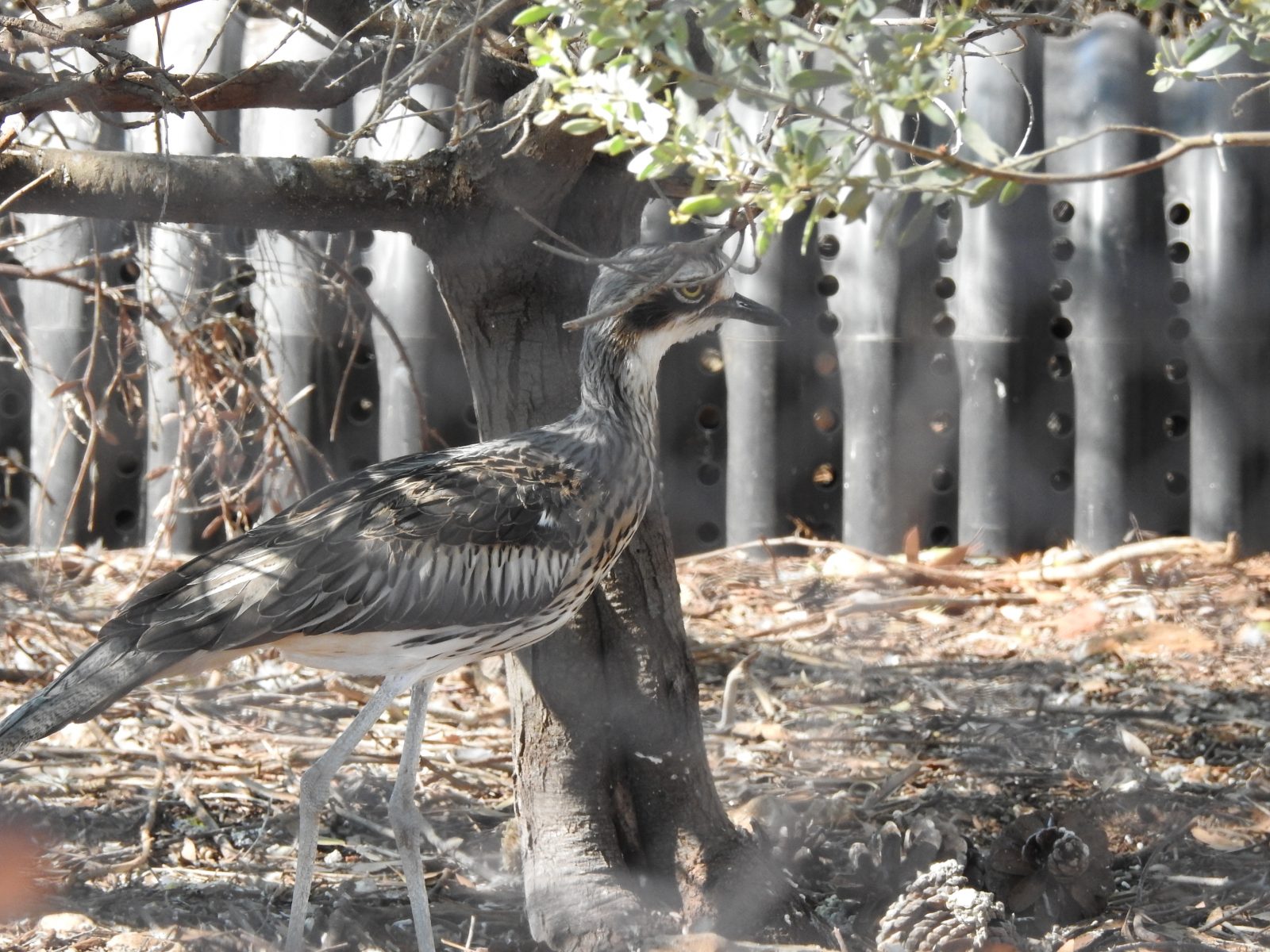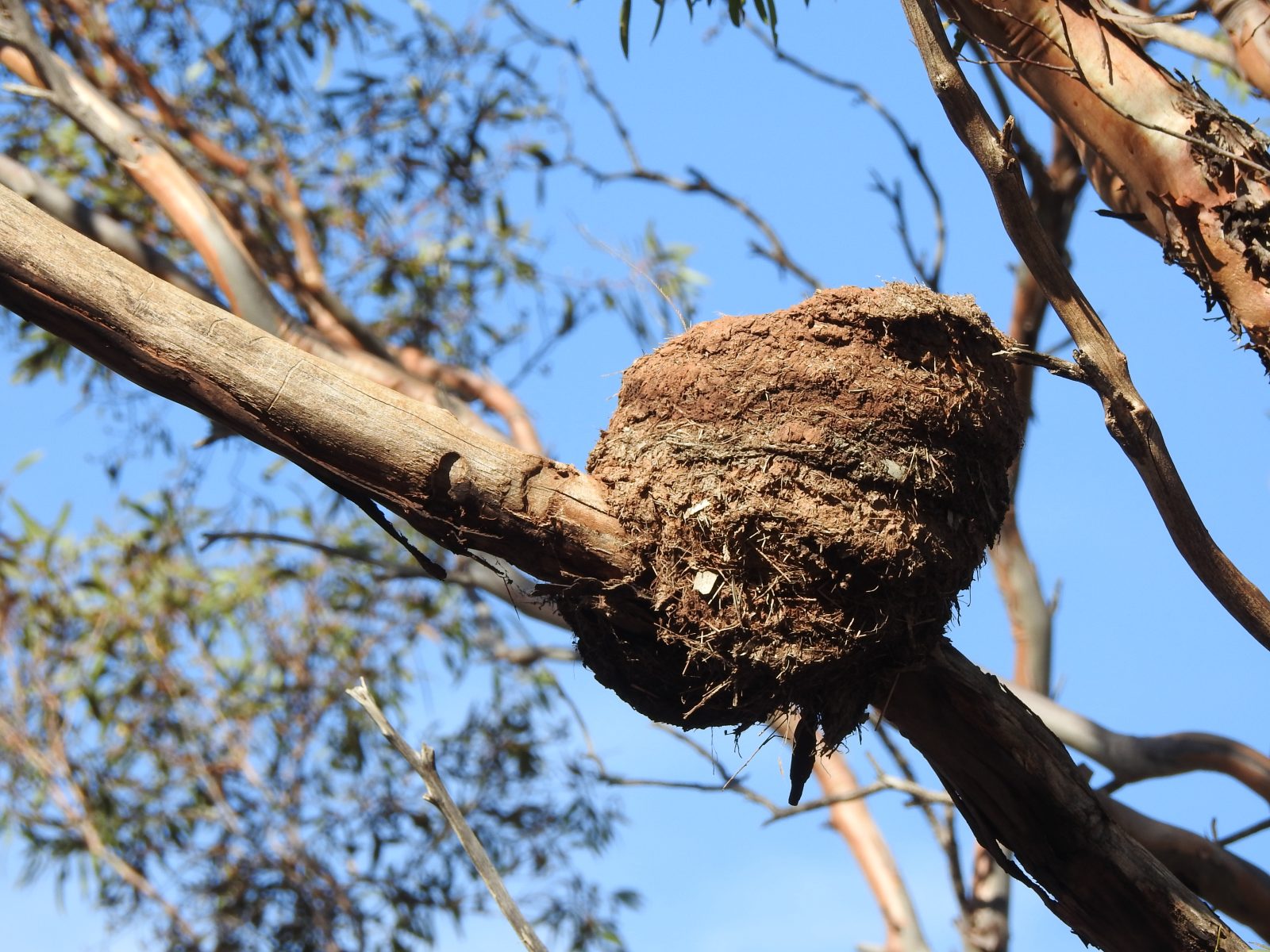Monarto Safari Park South Australia

Captive birds
My local zoo is the Monarto Safari Park just fifteen minutes from my home in Murray Bridge, South Australia. This zoo is a part of the Adelaide Zoo which is about an hour’s drive from here. I am a Life Member and try to visit often. One of my recent visits was last year when I went for one of the many walks in the park. On one of these walks, there is a large aviary which has a few captive birds in it, including the Tawny Frogmouths shown above.
Tawny Frogmouths are a widespread nocturnal species in this area and it is found throughout Australia, including Tasmania. From time to time I occasionally hear or see this species in my garden. My family and I love hearing the soft call of this bird and we have fond memories of hearing and seeing them on various camping trips.
Bush Stone-curlew
Another mostly nocturnal species in the aviary at Monarto is the Bush Stone-curlew, shown in the photos below. Again, this widespread species is found in many parts of Australia except Tasmania. Campers in our more remote areas may have heard its haunting call at night. On the other hand, in some areas, the Bush Stone-curlew has adapted to life in towns and cities, especially in Queensland where it is commonly seen on golf courses and reserves.
Annoyingly, this is one species I have yet to see in its natural environment and I only have photos like those shown below which have been taken in zoos. I must get out and travel more.
Non-captive birds
As visitors to Monarto Safari Park join the many bus tours through the large park, it is possible to see many of our local native bird species. These include Emus, Australian Magpies, Little Ravens, Brown Falcons, Black Kites, Wedge-tailed Eagles, various parrot species, as well as smaller bush birds like the Willie Wagtail, woodswallows, thornbills, wrens and a variety of water birds when there is water in the creek flowing through the park.
The best way of seeing and photographing these birds is to stroll along the many walking trails through the mallee scrub land. Warning: try not to wander into the African Lion enclosure, or you might find yourself invited to lunch – with you on the menu. By the way: the zoo has four new lion cubs born only recently and they are now on display.
One easily seen species is the White-winged Chough which is about the size of our magpies and ravens. They are often seen in family groups of 10 – 15 and as they fly the white on their wings can easily be seen. On my walk to see the aviary birds I also saw one of their mud nests (see the last photo below).





A special night visitor
Last night we had a wonderful visitor to our garden. Just before we turned on the television we heard the unmistakeable call of a Southern Boobook Owl in our garden. I immediately grabbed a powerful torch and head outside. Unfortunately the bird not only stopped calling, it must have flown off. I searched a few of the trees where I thought that the sound had been coming from but to no avail. Never mind, it was good to hear it and know that this species is still around.
It was a special visitor because we are so infrequently aware of this species of owl in our garden or in our little patch of mallee scrub about 80km east of Adelaide, South Australia. We actually hear it only a few times a year – at best. I guess we should switch off the television more often. Or perhaps I should head off with a torch and walk the “estate” more often – all five acres of it!
Because the bird we heard last night did not hang around very long, there was no opportunity to grab the camera for a photo. The photo above – possibly the same bird – was taken in one of our trees a year or so ago. On that occasion the bird obligingly posed for two photos.
Update October 13th: we heard it again this evening. This time it was closer to the house and we had a good view of it – twice in a few days is special.
Other nocturnal birds
Below is a list of nocturnal birds I have recorded on our property. Click on each to go to articles and photos of them.
The enigmatic Night Parrot
The Night Parrot has long been thought to be extinct.
This has been the presumed status of the species for many decades. In fact, the majority of confirmed sightings were in the period 1870 to 1900. Since then, several dead birds have been found on roadsides and there have been tantalising reports of birders getting brief glimpses of the parrot in car headlights. The chance was always there; did it still exist in sustainable numbers – or any numbers at all?
On our many travels I will often challenge my wife to be on the lookout for two species when travelling at night: the Plains Wanderer and the Night Parrot. Sightings of either species would be most unlikely and being a supportive and loving person she agrees to keep a sharp eye on the lookout. We always enjoy this verbal banter with a little laughter.
However, the chances of seeing a Night Parrot have risen slightly in the last year or so. Ever so slightly. From 0% to approximately 0.001% – or thereabouts. Or to put it in Australian slang terms – from Buckley’s to Forget it!
Some facts we know about the Night Parrot:
- It is nocturnal – making it just that bit more difficult to observe.
- It’s preferred habitat in spinifex grasslands in the arid interior of Australia – that big space in the middle where very few travel and even fewer live, limiting chance sightings even further.
- It is small, green and yellow and dumpy, and runs and hops in preference to flying.
- It shelters in the clumps of the spinifex during the day making it almost impossible to find during the day – unless stepped on. Which you wouldn’t want to do to such a rare bird.
- It has never been filmed – until recently.
- Not much is known about the habits of the species, but that is about to change.
Rediscovery
After well over 17,000 hours of field work over the span of a decade, this species was rediscovered and filmed by John Young.
In 2013 naturalist and wildlife photographer John Young captured several photos and a few seconds of video footage of a live bird in western Queensland.
After a search spanning many years, John was finally rewarded by an incredibly close-up encounter with a Night Parrot – often considered the ‘holy grail’ for birdwatchers and naturalists.
Global interest in the discovery was so intense that the exact location of this only known population remains a closely guarded secret to protect the birds from disturbance.
Quoted from the Bush Heritage Australia website.
What is interesting about the Bush Heritage article is the 3:34 minute video showing the bird and the habitat in which it lives, plus more information about efforts to conserve the area. There is also an appeal to raise money in this important conservation project.
I am sorry that I do not have a photo of my own to share with you. My wife will just have to keep looking.
Further reading:
- Bush Heritage Australia – read more about this interesting bird, watch a short video and donate to the project to preserve the bird’s environment.
- Looking for a Night Parrot in a Haystack? A recent report in The Australian newspaper.
A little night time visitor
Last night we were watching television with the lounge door open; it was a pleasant summer’s night. During a particularly quiet segment of the show we were watching we suddenly heard the churring call of our “resident” Australian Owlet-nightjar.
“He’s still around,’ we both cried out.
Now I need to clarify a few points here:
- I use the word “our” loosely. It is a wild bird in the natural environment so we do not own it.
- I am not sure if this particular bird is actually a resident on our 5 acre property. We do hear it often enough to think that it is here most days, but have no proof of that.
- I have no idea if it is a male or female – to call it “he” is more of a generic term.
Over recent months we have not heard this bird calling many times at all, so it was delightful to hear the call last night. I like to think that it is quite contented living around here most of the time.
A few years ago one bird – perhaps the same one – took up occupation of a significant hollow in one of our mallee trees in our back yard. Amusingly, during the cool winter months it would emerge from the hollow every morning around 11am and sun itself in the opening of the hollow, call a few times and then retreat to sleep until evening. Sometimes we would even hear it calling again as it went out feeding during the night., being mostly a nocturnal species. It was on one of those occasions that I was able to sneak up closer for a photo (shown above).
Over the last two summers the hollow has come under the “ownership” of a pair of Mallee Ringneck parrots who have successfully added to their family each time. Lately they have been busy feeding two very persistent young ones which have recently fledged.
Further reading:
- Australian Owlet-nightjar
- Australian Owlet-nightjar
- Australian Owlet-nightjar does exist
- Australian Owlet-nightjar in our garden
- A special call in the night
A special call in the night
A few night ago we were suddenly aware of the familiar call of a Southern Boobook owl quite close to our house. I only took a few moments to locate it in the large tree next to our clothes line. I didn’t bother getting out the camera to get some photos because the last time I saw one in our garden I got the photo shown above. It is quite possibly the same bird.
It has been some time since we heard a Boobook in our garden; usually we have the television going at night and that tends to drown out the night sounds. On this occasion we had both been working on cleaning out the office, so the television was off. Perhaps we should do that more often!
Much to our delight we heard it calling again the following night. It would be lovely to be able to call it a resident bird present nearly every night, instead of just an occasional visitor every few years. It is quite welcome to move in and can have all the mice it can catch while it stays.
Further reading:


